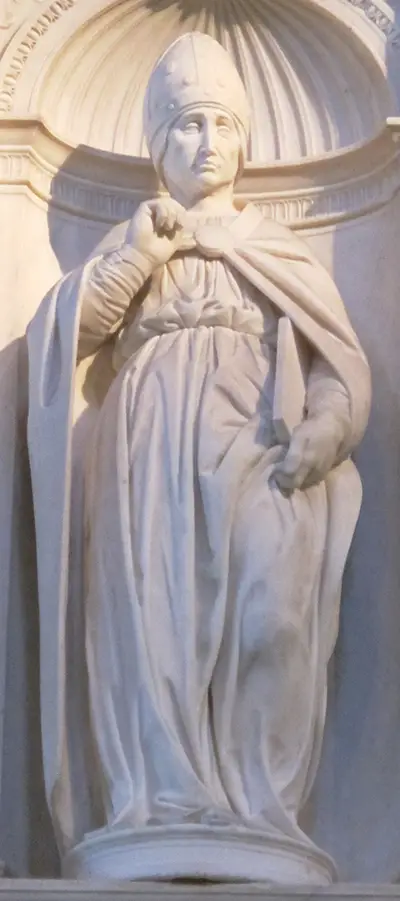The sculptor would take on a variety of commissioned pieces across his career and quickly established a strong reputation for innovation and quality. He became famous within his own lifetime and many leading figures wanted to have their own lives connected to his by hiring his services. Although St Pius is not one of his most famous sculptures, it still retains an important significance within his career and is well worth studying here in greater detail. It is also a part of a larger set of work which he completed for this altarpiece, with each item serving a different role within the overall display. Saint Paul, Saint Gregory, Saint Augustine (later resculpted as Saint Pius) and Saint Peter were all sculptures produced by this Italian master for the Piccolomini Altarpiece, alongside some other contributions by other leading Italian artists of the time.
A leading cardinal would initially call on the services of Italian sculptor Andrea Bregno to produce the entire altarpiece and he would progress well with the main elements before ill health would force him to retire. This left a large amount of work still to do and so they would bring in Michelangelo with the intention of him completing the project. He worked alongside some of his assistants to produce a series of figurative sculptures but eventually left before everything was done. The precise scenario around why he did not finish off the last pieces is unclear, with evidence only explaining the timings of his departure, and not the reasons behind it. His career has, of course, been examined in huge detail over the years and it seems unlikely today that this question will ever be confidently answered. Many suggestions have been made, and it was also not the only project that Michelangelo left unfinished within his career.
All of the figures created by Michelangelo for this altarpiece were produced between the years of 1501-1504, though he did also call on the aid of some of his assistants during parts of the process. Marble was used for all of them, as it was for the initial work by Andrea Bregno around two decades earlier. It was particularly common during the Renaissance for different artists to work on the same projects at different times, more so for the larger projects that could potentially take many years to complete and so were simply inevitably going to need different contributions at different times. In the cases of architecture it was very much the norm for one designer to hand over to another, or for the entire project to be completely re-imagined when tastes changed. Life spans were also shorter at that time, and so a sculptor or painter's time at the top of the profession would have been a little shorter than it might be today.


